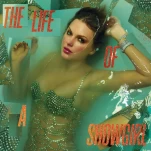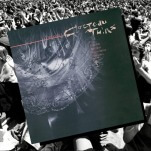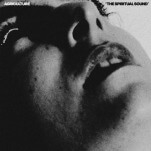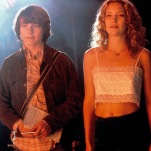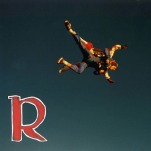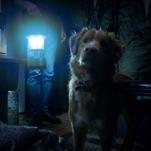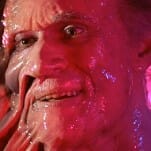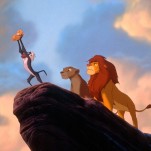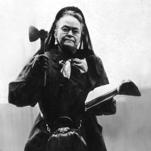The Three Worst Rock & Roll Hall of Fame Snubs
Without these pillars of music, there's no sense in having the shrine in Cleveland.
Photo: Getty Images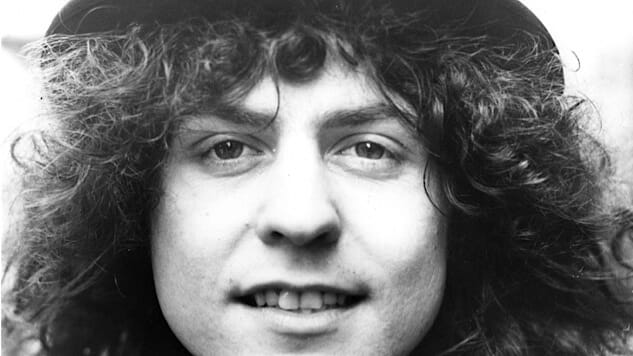
Everyone has a favorite Rock & Roll Hall of Fame snub. Mostly it’s a subjective distinction—although only mostly. Whatever your opinion of Kiss, for example, any band that sells 75 million records and inspires an entire decade of music to follow probably shouldn’t have to wait 15 years past its eligibility year to be inducted. But therein lies the inherent problem with any Hall of Fame that honors artistic achievement. Unless you’re simply counting up the stats—and who even really understands how we’re doing that anymore—there can never truly be a consensus on who merits enshrinement. There are people out there who hate The Beatles, after all. And whereas sports museums have an ongoing supply of generational talents who easily find their place among the iconic names of yesteryear, that’s not been the case with rock ‘n’ roll, which has steadily vanished from the pop charts since the Hall’s opening in 1995.
That’s why the topic of Rock Hall snubs has only been amplified in recent years, as the diminishing quality of the inductees—which this weekend will include middling bands like Bon Jovi, The Cars, The Moody Blues and Dire Straits in the class of 2018—has begun to alarm even the most ardent lovers of rock ‘n’ roll. These are bands that sold well and had some hit videos on MTV in their prime, but were they really that influential on the generations of artists who followed them? According to the Hall of Fame’s own induction criteria, honorees must have “demonstrat[ed] unquestionable musical excellence and talent” and “had a significant impact on the development, evolution and preservation of rock & roll.” Can we say that about Bon Jovi?
Countless bands have sold fewer records but had much more significant impacts. Without question, there remain artists from rock’s boom years that more than meet these criteria yet have been denied this honor. Here are but three foundational pillars of rock ‘n’ roll that you should be holding a candle for when the Rock & Hall of Fame inducts its latest class.
Marc Bolan of T. Rex
Bolan (pictured top), the English guitarist and songwriter who died in 1977 at age 29, was the first rock musician to wonder what his cheekbones would look like when affixed with glitter, essentially inventing glam rock and helping to launch the next three decades of hard rock. Even putting aside his tremendous impact on the late-’60s explosion of guitar rock, he is an inner-circle Hall of Famer just for turning rock into a fashion statement.
“He wasn’t just a dedicated follower of fashion—he created fashion,” said Alan Edwards, the English publicist who worked with both Bolan and his friend, David Bowie. “With his black curls, made-up eyes and uniquely androgynous look, Marc helped pioneer a look that endures to this day. His hippie-chic influence can be seen all over the place.”
Bolan’s T. Rex checks the popularity box, too, which may come as news to people who follow only the U.S. charts. In America he’s often classified, unfairly, as a one-hit wonder with a sole Top 10 hit, “Bang a Gong (Get It On).” But T. Rex is one of the most successful groups in the history of Great Britain, with 11 straight Top 10 singles from 1970 to 1973. And T. Rex albums include two five-star classics, Electric Warrior and The Slider. Bolan understood more than most that rock ‘n’ roll is, at its heart, a silly thing. So there’s a refreshing innocence and joy in his music and especially his lyrics.
He was also a first-class rock guitarist—not for the virtuosity that had become en vogue at the time with Eric Clapton and Jimmy Page, but just for being rifftastic. He more than passes the primary guitarist test: being instantly recognizable. While the catalog is shallow, you can’t dock Bolan for dying in a car crash just before his 30th birthday. Beyond his fashion influence, Bolan was central to the development of not only glam but punk rock. And his sound can be heard in Hall of Fame acts like Guns ‘N Roses (Slash took his signature top hat straight from the cover of The Slider), Joan Jett, Kiss, Cheap Trick and even U2, with Bono and The Edge competing to be the biggest T. Rex fans.
Big Star
Big Star are rock ‘n’ roll’s cult classic band. They basically had zero popularity during their initial three-year recording career for reasons that remain inexplicable to most—a combination of bad timing, worse marketing and label indifference. But their innovative mix of Americana and British pop helped launch hundreds of bands on both sides of the Atlantic including R.E.M., The Replacements, The Posies, The Cramps, Jeff Buckley, Counting Crows, Wilco and Teenage Fanclub. Considering that they invented American power-pop, it’s downright unfair that a Big Star knockoff like The Cars is now entering the Hall of Fame while the original is consigned to the margins of history.
Led by Alex Chilton and Chris Bell, Memphis natives with dueling Beatles obsessions and preternatural songwriting chops, Big Star’s sound was highly melodic and commercial. Their two proper studio albums, 1972’s #1 Record and 1974’s Radio City, are now undisputed classics, packed with should-have-been hits like “Feel,” “When My Baby’s Beside Me,” “September Gurls” and “I’m in Love with a Girl.” Their third, Third/Sister Lovers, couldn’t generate enough interest from labels to get a proper release and barely made it to the public at all, effectively killing one of the great American rock bands of all time. But it was still in the top 10 of our 30 Best Albums of 1978 list.
Big Star’s signature was putting guitar power in their pop, but the lighter-sounding, acoustic variations in their catalog were no less remarkable. Their highpoint is probably “Thirteen,” one of the most touching songs ever recorded about the transition from childhood to becoming an adult. “Ballad of El Goodo” is another song that breaks out of the genre and finds a softer, signature, sonic beauty.
New York Dolls
New York Dolls followed T. Rex into glam and laid a direct road to punk, stripping down the boogie of The Rolling Stones to its dirtiest elements. The common denominators were a very raw sound rising out of their musical limitations combined with a street sensibility befitting their name. The Dolls made their mark from the opening chord of their debut album, “The New York Dolls,” considered by many not only the best debut album ever but one of the great albums in rock history. Here they are swaggering through “Personality Crisis” on Midnight Special in 1973.
Led by David Johansen and his huge, Jagger-like mouth, the Dolls were named both the best and worst group of 1973 by Cream magazine, because people loved and hated how seriously rock was being taken at the time. The band was known for its cynical, sometimes mean and often wise-cracking lyrics. Songs like “Jet Boy” and “Trash” supercharged Jagger’s sexual ambiguity and embodied an era of experimentation.
New York Dolls earns its plaudits for “defining exactly where 1970s rock should be coming from,” critic Robert Christgau wrote at the time. The Dolls “were the best hard rock band in the country and maybe the world.” Has anyone ever made an album so important, one cited by MoJo as one of the “100 Records That Changed the World,” and not been inducted? This seems like a slam-dunk case.
Perhaps unsurprisingly for a band as reckless as the Dolls, things fell apart after two cult classic albums—much like Big Star. Note, though, that the Dolls were stars before they even entered the studio on the strength of live performances that were selling out NYC venues. Ultimately, the proto-punk lifestyle did them in. By 1976, the Dolls were in full meltdown and hired Malcolm McLaren as their manager. McLaren could not hold the group together and left to take charge of The Sex Pistols, which guitarist Sylvain Sylvain was asked to join.
‘We’ve found this kid and we’re thinking of calling him Johnny Rotten,” McLaren wrote Sylvain. “He can’t sing, but he definitely sings better than Johansen.” McLaren should have known then that it wasn’t about the singing. Or the playing. Well, it was but not in the way that most rock aficionados conceived at the time. But there can be no better case for having a “significant impact on the development and evolution of rock & roll.”
McLaren said it best: “The Sex Pistols were identical to the New York Dolls…and they were identical in terms of their actions.”
So enshrine the Dolls right next to the Pistols.
